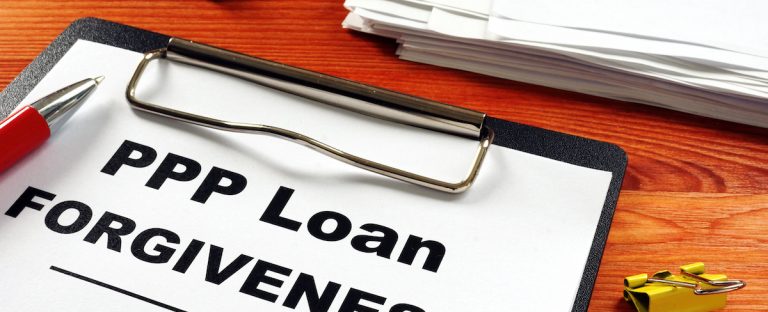The COVID-19 coronavirus had a profound effect on holistic patient care. Many practices were forced to see patients under highly restrictive circumstances, and sometimes they were not able to see them at all. As state-mandated social distancing guidelines are slowly relaxed, many holistic practices are wondering what to do with themselves until patient levels return to the pre-lockdown levels.
What COVID-19 Has Meant for Holistic Patient Care
The impact of the coronavirus pandemic on holistic patient care has been somewhat uneven and determined primarily by whether or not a particular practice area is designated as an essential service. Chiropractic providers were given that distinction by the Department of Homeland Security in late March, which allowed many chiropractors to remain open and see patients even during the height of state-imposed social distancing requirements.
Unfortunately, massage therapy and acupuncture practices did not receive the same endorsement from federal authorities, which meant that most states ended up designating them as “non-essential” medical services. These practices often had no choice but to close their offices for the duration of the stay-at-home restrictions.
While most states have taken steps to roll back restrictions and allow businesses to reopen, some holistic practices either aren’t ready to resume seeing patients or will be serving fewer patients than they did prior to the crisis. Whether an office is reopening or taking a “wait and see” approach for the time being, many holistic practitioners are looking for ways to remain productive until they’re able to get back to full capacity.
5 Ways to Stay Productive While Unable to Give Holistic Patient Care or Operate at Maximum Capacity
1. Focus on Continuing Education
If your holistic practice is still closed or you’re only seeing a much smaller number of patients, this is a perfect opportunity to catch up on the latest trends and developments within your specialty. Most states have some form of licensing system in place that requires holistic patient care providers to take part in continuing education to ensure that they’re aware of changing best practices when it comes to delivering care. Finding the time to fit this training in between a full schedule of patients can be quite a challenge, but it should be much easier to do so during the temporary slowdown. Focusing on education will also help you to keep your skills sharp for when your patients return.
2. Reassess (or Create) Infection/Disease Prevention Policies
The impact of COVID-19 will continue to be felt even after most businesses reopen. Until an effective treatment or a vaccine is developed, there will be an ongoing risk of infection and potentially even another rapid outbreak. It’s critical, then, for every holistic practice to take extreme caution as they begin seeing patients again. One thing you can do to promote better safety is to review your policies for limiting disease exposure (or developing them if you don’t have them). This could include how you schedule and manage patients all the way down to what items you keep in your waiting room. Taking these steps now will help to reassure patients when they return that you’ve done everything in your power to create a safe and healthy environment for them.
3. Reevaluate Your Practice Procedures
Is there something about the way you schedule clients or manage your records that always caused your holistic practice headaches in the past? Now is the perfect time to solve those problems. Many practices tolerate certain inefficiencies or systems because it would be too disruptive to change them. Now that your holistic practice is functioning well below capacity, however, it’s the perfect time to make those policy changes you’ve always had in mind, whether it’s changing the way you communicate with patients or how you bill holistic patient care to insurance companies. It may also be a good time to review PPP loan forgiveness guidelines if your practice received such a loan.
4. Clean and Repair Your Office
While your office should never be dirty, there’s always a deeper level of cleaning that simply takes too much time to complete when you have a steady schedule of patients. The same goes for longstanding repairs that need to be done. It simply isn’t practical to close down your waiting room for a few days to have the carpeting torn out and replaced with wood floors, just as there never seems to be the time to steam clean or disinfect every corner of the office. Make sure that when you do begin seeing patients again, they’ll know immediately that you’re committed to making their visit as accomodating and as comfortable as possible.
5. Network, Network, Network
Managing a full load of patients can be overwhelming at times, leaving little opportunity to connect with fellow holistic care providers. The slowdown is a good time to start building (or rebuilding, in some cases) those connections. Find out what other practices are doing to address the COVID-19 crisis. How are they handling their billing and coding? Are they attending industry events and putting their names out in the community to attract new patients? Networking with your peers not only exposes you to new ways of managing your practice, but also creates opportunities for you to reach new patients and partners.
Keep Your Holistic Practice Productive and Profitable with Holistic Billing!
As a medical insurance billing provider dedicated solely to the unique needs of holistic practices, Holistic Billing Services is here to help as you prepare to reopen your practice following the COVID-19 shutdown. With many people losing their private health insurance after being laid off, you may well find yourself billing for more Medicaid and Medicare reimbursements. Having an experienced billing service like Holistic Billing at your side can ensure that you’re acupuncture billing, massage therapy billing, and chiropractic billing are being done properly to get you reimbursed faster. Contact our team today to learn more about how we can get your practice back on its feed following the several months of coronavirus restrictions.
(This post has been updated to reflect PPP loan forgiveness changes passed by Congress in June 2020)
On March 27, 2020, Congress passed the Coronavirus Aid, Relief, and Economic Security (CARES) Act, an unprecedented $2.2 trillion assistance package intended to deliver financial support to both individuals and businesses impacted by the public health crisis resulting from the COVID-19 pandemic. While the law contains over 800 pages of relief provisions, one of the most important pieces for holistic practices was the $350 billion allocated to the Paycheck Protection Program (PPP).
What are PPP Loans?
In an effort to shore up small businesses, Congress authorized the Small Business Administration (SBA) to give out 100% federally-backed loans to cover payroll and other business expenses. The size of these loans was to be determined by the amount of time the business remained in operation throughout the COVID-19 crisis (which the CARES Act designated as February 15-June 30). Businesses that remained open could receive a maximum loan of 250% of their monthly average payroll costs. The best news, however, was that PPP loans would be forgiven provided businesses used them for their intended purposes and met certain requirements (more on that in a moment).
Although backed by the federal government, businesses had to apply for PPP loans through their regular bank, which caused a number of bottlenecks that prevented money from being distributed quickly. The program also burned through its initial funding within weeks, forcing Congress to pass another bill to provide another $310 billion to borrowers. In total, banks issued around 4.3 million PPP loans totaling $500 billion.
New SBA Guidelines for PPP Loan Forgiveness
On May 15, the SBA and the Department of the Treasury released guidelines on how borrowers could apply to have their PPP loans forgiven. While the CARES Act clearly stipulated that these loans would be forgivable under certain conditions, it left the details of how that process would be handled to the SBA. After the details were made available, however, many business owners raised concerns with Congress, which led to the passage of additional legislation in early June that made further modifications to the loan forgiveness terms.
Borrowers can request forgiveness of their PPP loan by filling out SBA Form 3508, Paycheck Protection Loan Forgiveness Application. Consisting of several sections, the first two parts of the form (PPP Loan Forgiveness Calculation Form and PPP Schedule A) must be submitted to the lender who issued the loan. In most cases, this will be whatever bank your holistic practice has an existing relationship with.
According to SBA’s guidance, there are four business cost areas that are eligible for loan forgiveness so long as they were incurred during the 24-week period (extended by Congress from the original 8-week period) following the disbursement of the PPP loan (the borrower’s “Covered Period”):
- Payroll costs.
- Business mortgage interest payments.
- Business rent or lease payments.
- Business utility payments.
Although the guidelines originally required payroll costs to make up 75% of the forgivable amount, Congress subsequently reduced that amount to 60% and extended the repayment period for unforgiven debt from two years to five.
Payroll Costs
The borrower may deduct payroll costs that were either “paid” or “incurred” during the Covered Period. This distinction allows for some flexibility, as some payroll costs may be incurred before the end of the Covered Period, but not paid until afterward. The total amount of forgivable cash compensation given to each employee during the Covered Period cannot exceed $15,385 (or a $100,000 annual salary prorated over the Covered Period). Non-cash compensation, such as health insurance or retirement contributions, given to employees is not subject to this pro-rated limit.
Business Mortgage Interest Payments
Any interest payments made during the Covered Period on mortgage obligations involving real or personal property incurred before February 15, 2020 are eligible for forgiveness.
Business Rent or Lease Payments
Any rent or lease payments made during the Covered Period on real or personal property directly related to the business due to agreements established prior to February 15, 2020 are eligible for forgiveness.
Business Utility Payments
Any utility payments involving the use of electricity, gas, water, transportation, telephone service, or internet access made during the Covered Period directly related to the business due to service agreements in place before February 15, 2020 are eligible for forgiveness.
Keep in mind that non-payroll costs cannot exceed 25% of the total forgivable amount.
CARES Act Workforce Reduction Guidelines
One of the key goals of the CARES Act was to ensure that full-time employees were not laid off due to the economic downturn caused by the COVID-19 pandemic. In order to qualify for loan forgiveness, employers had to maintain the size of their workforce during the Covered Period. The new SBA guidance measures this with a calculation called full-time equivalency (FTE).
A borrower calculates FTE by dividing the average number of hours paid per week to each employee by 40 and rounds the total to the nearest tenth. Alternatively, they can simply assign a 1.0 for employees who work 40 hours or more each week and 0.5 for employees who work less than 40 hours. If the employer’s average FTE during the Coverage Period is lower than the average FTE during past reference periods, it may not be eligible for forgiveness of all PPP funds. Any employee compensation reductions of 25 percent or greater could also limit loan forgiveness.
The latest SBA guidelines do stipulate a few exceptions to this requirement, however. Any FTE reductions that resulted from an unsuccessful, good faith attempt to rehire an employee are not counted against the employer. Also, any employees who were fired for cause, voluntarily resigned, or voluntarily requested and received a reduction in hours are exempted from the calculation.
There is also a “Safe Harbor” provision that exempts any borrower from losing out on loan forgiveness due to FTE reduction provided they meet the following conditions:
- The borrower reduced FTE levels between February 15 and April 26, 2020, and
- The borrower restored FTE levels to the February 15 level by no later than December 31, 2020.
PPP Loans and Your Holistic Practice
Since PPP funds were distributed through banks, many businesses had difficulty securing loans even when they met the established requirements. This was especially difficult for small businesses like holistic care providers, who often found themselves losing out to much larger companies. For practices that were fortunate enough to obtain a PPP loan, the newly released SBA guidelines offer an easy-to-follow roadmap to getting the loan forgiven so they can get back to treating patients as businesses begin to reopen.
Holistic Billing Services is ready to help these practices resume operations and relieve the pressure of billing and coding so they can tend to their patients in these difficult times. To find out how we can get your acupuncture, massage therapy, or chiropractic practice back up to speed, contact our experienced team today.
After the rapid spread of the COVID-19 coronavirus, social distancing guidelines quickly gave way to widespread shutdown orders that caused many businesses to close for an extended period of time. While some practices remained in operation, not every holistic practice was lucky enough to receive “essential” designation and joined businesses like restaurants and retail stores in closing their doors.
As several states begin to relax these guidelines, holistic practices need to start making plans to reopen to patients. Before they can do so, however, there are several factors they must take into consideration.
When Will Holistic Practices Start Reopening After COVID-19?
The question of when to reopen depends on a number of factors. First and foremost, COVID-19 shutdown orders have been implemented at the state level, so there has not been a universal standard applied to all practices across the country. This also applies to the decision to reopen, with some states moving very swiftly (perhaps too swiftly, in the eyes of some health experts) while others are more hesitant.
In some cases, holistic practices did not close at all. Chiropractic providers, for example, were designated as an essential service by the Department of Homeland Security in late March. While this designation took the form of an advisory rather than a federal mandate, it did create the justification for some states to allow these practices to stay open throughout the COVID-19 shutdown.
For massage therapy and acupuncture practices, however, the situation has been more complicated. Without clear guidance from federal authorities, most states have either specifically designated massage and acupuncture as “non-essential” medical services or failed to provide a clear exemption from shutdown guidelines. Since providing massage and acupuncture treatments is not possible without close contact with patients, many of these practices would most likely have experienced a significant drop-off in patient traffic even if they had been deemed essential medical services.
Given this complex environment, each state’s guidelines for relaxing shutdown policies must be considered individually. Some states are already allowing non-essential practices to reopen, but others are keeping strict social distancing guidelines in place for the foreseeable future. Holistic practices should check their state’s current status to make sure they’re using the most up-to-date information for deciding when (and how) to reopen.
What Do You Need to Do Before Your Holistic Practice Reopens?
If your state is allowing holistic practices to reopen, it’s important to realize that most businesses are reopening under very strict conditions that take the ongoing risk of COVID-19 into account. That means several changes will need to be made when it comes to managing and treating patients.
Here are a few things you should do before reopening your holistic practice:
Implement Patient Prescreening
Every patient should be prescreened by phone before they arrive at the office to make sure they are not symptomatic. Do not come into contact with anyone who may be infected with COVID-19. Patients who arrive at the office ill should be sent home immediately to avoid the risk of further infection. Since implementing social distancing measures will likely reduce the number of patients you can see in a day, you should also establish a system for prioritizing patients with the most urgent needs.
Rearrange Waiting Areas
Patients should not be in close proximity to one another while waiting to receive treatment. There should be at least six feet of distance between seating. Depending on the layout of the office area, guidelines may need to be put in place to avoid having too many people in narrow hallways or elevators. Non-essential items in waiting areas and treatment rooms (such as magazines, dishes with mints, or games) should also be removed as they could become transmission vectors.
Stagger Your Bookings
One of the easier ways to avoid having too many people in an office is to stagger appointments. This not only minimizes the number of people sitting in a waiting area, but also creates opportunities to clean and disinfect surfaces that could be contaminated. While this could mean seeing fewer patients during the day, lower patient volume is preferable to your holistic practice becoming a vector for COVID-19 infection.
Use Protective Gear
Even as states begin to reopen businesses, many of them are still advising customers and employees to wear protective equipment to minimize direct contact. Everyone working at your holistic practice should have a mask and gloves, and it would not be unreasonable to ask the same of patients.
Emphasize Handwashing
Handwashing is one of the most important steps you can take to minimize the risk of infection. It’s especially important for holistic practices, where some amount of patient contact is unavoidable. Stock up on soap and think about how to incorporate a rigorous handwashing routine into your practice. Even when wearing protective equipment and washing your hands regularly, avoid touching your eyes, nose, and mouth while treating patients to minimize the risk of transmission.
Get Your Holistic Practice Ready for Success With Holistic Billing!
Preparing your holistic practice to reopen after the COVID-19 shutdown is a major undertaking that will require you to rethink some of your core business practices. One area that could be more complicated than ever is patient billing. With many people losing their jobs and health insurance rules changing rapidly, it can be difficult to keep up with the demands of billing and coding for holistic practices.
By partnering with an experienced billing service like Holistic Billing, you can let someone you trust to manage the ins and outs of billing while you focus on getting your holistic practice ready to reopen. Contact our team today to make sure your business has everything it needs to manage billing the aftermath of the COVID-19 shutdown.
Operating a healthcare practice of any kind, whether it’s a western-style medical office or a holistic health service, is a challenging and complicated undertaking. As if providing quality care to patients wasn’t difficult enough, there are many other factors practices must take into account if they want to be successful. Learning the ins and outs of health insurance coverage, for instance, is an ongoing process that changes every year as provider policies are updated. Implementing processes and systems for collecting revenue is also essential, especially if many of the practice’s health services aren’t covered by insurance.
Most of these issues fall under the broad responsibilities of healthcare management and healthcare administration. While these terms are quite common, there is a lot of confusion around them because they are often used interchangeably despite the fact that they do have specific meanings.
The Difference Between Healthcare Administration and Healthcare Management
What is Healthcare Management?
As the term “management” might suggest, this area refers primarily to how the business aspects of a healthcare or holistic practice are handled. The primary focus of healthcare management is to develop a business plan that meets the practice’s specific goals and then execute on that plan using a variety of management, negotiation, and leadership techniques. Most healthcare management professionals hold an MBA or have a background in accounting or facilities management. They are typically responsible for budget management, organizational policies, standards of patient care, marketing, compliance, and various aspects of healthcare law.
What is Healthcare Administration?
While healthcare management emphasizes the business side of a practice, healthcare administration is more focused on overseeing and coordinating the staff within a practice or department. The typical healthcare administrator supports the policies and processes that help medical personnel deliver effective care that impacts patients. While they may at times be responsible for meeting regulatory requirements that are associated with healthcare management, healthcare administrators primarily support, direct, and encourage employees to ensure that they are able to provide the best care. Crucially, they are often considered to be healthcare professionals, and it is common for these roles to be filled by physicians, nurses, or other public health specialists.
Healthcare Administration vs Healthcare Management: Who Handles Medical Billing?
There are a lot of similarities between these roles, and the distinctions are made even more confusing by healthcare organizations that use the terms interchangeably. In general, however, the primary difference is that healthcare managers are responsible for the operation of a facility as a whole while healthcare administrators oversee the operations of specific departments and medical staff.
So which of these roles is responsible for medical billing?
Perhaps predictably, it depends on the specific practice.
Larger healthcare practices and medical facilities generally have dedicated medical billers who are responsible for coding medical services and then filing and submitting claims. Some organizations classify this role as a management position while others consider it administrative. In most cases, medical billers are not required to have any medical training, which would suggest that they’re more on the management side. However, since medical billers must work closely with both medical staff and patients, their role fits more naturally within the framework of healthcare administration.
For smaller healthcare practices, the distinction is far less important because the lines between healthcare management and healthcare administration are not clearly drawn. These practices don’t have the revenue or patient volume to justify the existence of additional office personnel. In many cases, both managerial and administrative are handled by only a few (or even just one) people, in addition to many other tasks they’re responsible for. This is especially true of holistic practices, where the clinician may be responsible for every aspect of their practice without any assistance from employees.
The Value of Outsourcing Holistic Billing
For many acupuncture, massage therapy, and chiropractic practices, it can be difficult to provide quality care to patients while also keeping up with all the demands of healthcare management and administration. Medical billing, in particular, can be incredibly time-intensive, not only requiring holistic practitioners to organize, file, and monitor all billing claims, but also to keep up-to-date on the latest changes to coding and to which holistic healthcare services insurance companies will agree to cover.
Partnering with an experienced medical billing provider that specializes in holistic practices can streamline an office’s operations and allow clinicians to dedicate more of their attention to their patients. While there are many medical billing services available, it’s important to find a provider that understands the unique characteristics of holistic practices and can provide the specialized support that helps these practices to be more successful.
At Holistic Billing Services, we recognize that acupuncture, massage therapy, and chiropractic practices call for a much different approach to medical billing than traditional healthcare practices. That’s why we’ve focused specifically on this growing area of medical care and have partnered with over 1,200 practices to help them improve their revenue cycle management and boost their net collections. Our convenient and secure solutions can take the hassle of insurance verifications, claims processing, and denied claims follow-ups off your hands so you can focus on what matters most: delivering quality care to your patients.
To learn more about how our team of experts can help improve your holistic billing, contact us today for a consultation.




